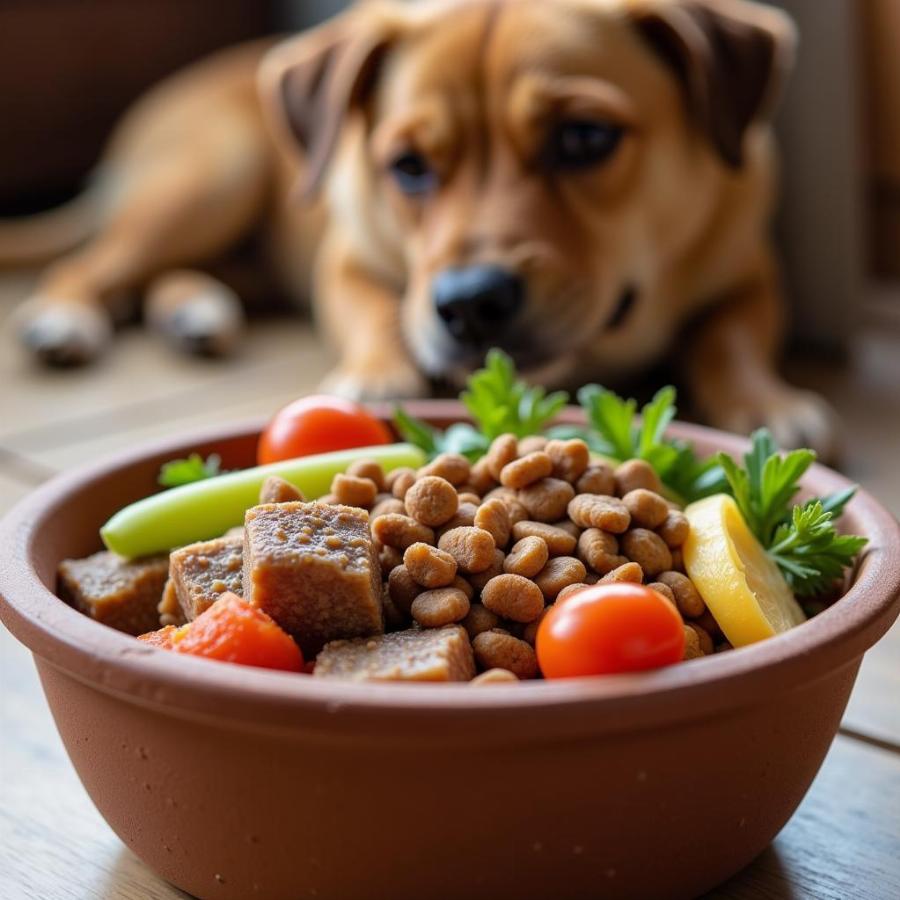Understanding and improving your dog’s quality of life is crucial for every responsible owner. While there isn’t a single, universal “dog quality of life calculator,” this guide offers a comprehensive approach to assessing and enhancing your furry friend’s well-being, covering physical health, mental stimulation, environmental enrichment, and emotional well-being.
Assessing your dog’s quality of life involves a multifaceted approach, going beyond simply providing food and shelter. It requires a deep understanding of your dog’s individual needs and recognizing signs of happiness, discomfort, or distress. This guide will equip you with the knowledge and tools to create a fulfilling life for your canine companion.
Understanding Your Dog’s Needs
Every dog, regardless of breed, age, or size, has basic needs that must be met to ensure a high quality of life. These include proper nutrition, access to fresh water, regular exercise, a safe and comfortable environment, and consistent veterinary care.
- Nutrition: A balanced diet is crucial for your dog’s physical health. Consult your veterinarian or a canine nutritionist to determine the appropriate food and portion size for your dog’s breed, age, and activity level. just food for dogs feeding guide offers helpful resources.
- Hydration: Always ensure your dog has access to clean, fresh water, especially during hot weather or after exercise. dog food and water bottle offers practical solutions.
- Exercise: Regular physical activity is essential for maintaining a healthy weight, promoting good cardiovascular health, and providing mental stimulation. The type and amount of exercise will vary depending on your dog’s breed and age.
Mental and Emotional Well-being
Beyond physical health, mental and emotional well-being are equally important components of a dog’s quality of life. Mental stimulation can be provided through training, puzzles, interactive toys, and social interaction.
- Training: Training not only teaches your dog obedience but also strengthens your bond and provides mental stimulation. Positive reinforcement methods are highly effective and build a positive relationship.
- Socialization: Interacting with other dogs and people is important for your dog’s social development and emotional well-being. Provide opportunities for safe and supervised playdates.
- Environmental Enrichment: Create a stimulating environment for your dog with a variety of toys, chew items, and opportunities for exploration.
Recognizing Signs of a Happy Dog
A happy dog exhibits a variety of behaviors that indicate a high quality of life. These include:
- Playfulness and Energy: A happy dog will be energetic and eager to play.
- Relaxed Posture: A relaxed dog will have a loose, wagging tail, and soft eyes.
- Healthy Appetite and Sleep Patterns: A happy dog will eat and sleep well.
- Interest in Surroundings: A happy dog will be curious and engaged with its surroundings.
Addressing Potential Issues
If you notice changes in your dog’s behavior, such as loss of appetite, lethargy, or withdrawal, it’s crucial to consult with your veterinarian. These changes could indicate an underlying health issue or emotional distress. is my dog underweight can help you assess your dog’s weight.
 Proper Dog Nutrition
Proper Dog Nutrition
Conclusion
While a precise “dog quality of life calculator” doesn’t exist, by focusing on your dog’s physical, mental, and emotional well-being, you can ensure a happy and fulfilling life for your beloved companion. Regular veterinary checkups, a balanced diet, adequate exercise, mental stimulation, and a loving environment are all key components of a high dog quality of life.
FAQ
- How can I tell if my dog is happy? Look for signs like playfulness, a relaxed posture, a healthy appetite, and interest in their surroundings.
- How much exercise does my dog need? The amount of exercise varies based on breed, age, and health. Consult your veterinarian for recommendations.
- What are some ways to mentally stimulate my dog? Training, puzzles, interactive toys, and socialization are all excellent ways to provide mental stimulation.
- How often should I take my dog to the vet? At least annually for checkups, and more frequently if you notice any changes in behavior or health.
- What should I feed my dog? A balanced diet appropriate for their breed, age, and activity level. portion size for 10 lb dog raised right dog food can help you determine correct portions.
- How can I create a stimulating environment for my dog? Provide a variety of toys, chew items, and opportunities for exploration.
- What should I do if my dog seems unhappy or unwell? Consult with your veterinarian immediately.
Suggested Further Reading
No further reading suggestions at this time.
About Beaut Dogs
Beaut Dogs is your trusted source for comprehensive and reliable information on the world of dog breeds. We offer expert advice on everything from breed characteristics and care to health, nutrition, and training. For personalized support and detailed answers to your questions, please contact us via Email: [email protected]. We’re here to help you provide the best possible care for your beloved canine companion. Visit https://beautdogs.com to learn more.